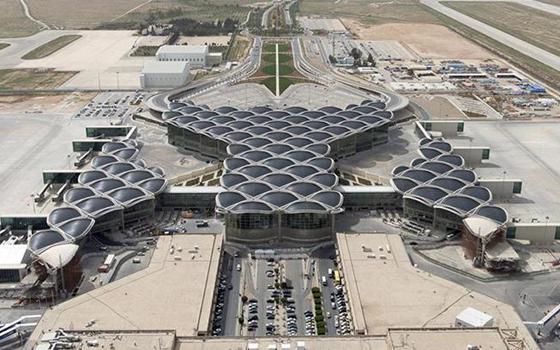The completion of a second phase of work at Queen Alia International Airport (QAIA) last September signaled a major step forward in ongoing efforts to expand passenger capacity. The project saw the introduction of 12 new gates, two duty-free stores and two business class lounges.
The $214m terminal project increased QAIA’s total area to 160,000 sq metres and boosted capacity by more than 70%, enabling it to accommodate 12m passengers annually.
Another significant move was made in early July, when Jordan invited investors to bid on a project to convert Amman Civil Airport from a facility dedicated to chartered and private flights to one serving commercial air passengers.
According to a study cited in local media, the project is expected to cost an estimated JD150m ($212m) and will be offered on a build-operate-transfer (BOT) basis. Plans for the airport – situated 5 km north-west of the capital Amman – include the construction of a new passenger terminal and runway expansion.
The announcement followed news in mid-June that the Cabinet would put JD80m ($113m) towards the renovation of the airport, as part of a public-private partnership (PPP). The project is the largest of a series of PPPs approved by the government that month, worth a combined JD200m ($282m).
Boosting capacity
Jordan’s efforts to transform its airport infrastructure are already yielding benefits in terms of arrival numbers. Almost 3m passengers entered Jordan through QAIA in the first five months of 2017, up 3.8% on the same period last year, according to figures released in July by Airport International Group (AIG), which is overseeing the renovation project at the airport.
During the next phase QAIA’s capacity will be increased to accommodate 16m passengers annually, with the number of gates set to rise from 17 to 25.
The project is being implemented as a PPP under a 25-year BOT concession agreement that runs through to 2032. AIG – a consortium made up of Invest AD, Noor Financial Investments, Edgo Group, J&P, J&P-Avax and Aéroports de Paris Management –has committed $750m to the infrastructure and expansion works.
An eye on Europe
Increased capacity at the country’s airports will help to accommodate an expected increase in international arrivals, particularly from Europe.
With more than 500 weekly flights to 44 destinations already in service, national carrier Royal Jordanian is looking to bolster existing air links with the continent.
At the end of January it entered into a codeshare agreement with Italy’s flag carrier Alitalia, enabling both airlines to carry their flight code on each other’s routes.
The deal will provide travellers with 12 weekly flight options between Rome and Amman, paving the way for improved travel and tourism between the two countries. Furthermore, passengers boarding in Jordan will be able to fly to a number of European destinations, including Florence, Venice, Naples and Turin, via Royal Jordanian, on a single ticket.
The European market has shown significant potential in recent years. According to figures from the Ministry of Tourism and Antiquities, the number of visitors travelling to Jordan from Europe by air increased by 17% in 2016 to reach 318,416.
And while European travellers accounted for just 10.1% of total air arrivals in 2016, the continent represents the second-largest source market after Arab countries, according to government figures.
The expansion works at Jordan’s airports could also help to increase visitor numbers from the Middle East after a challenging year; arrivals by air from Arab countries dipped 5.5% to 935,099 in 2016. However, ongoing improvements could push this number over the 1m mark this year.
Oxford Business Group






















































